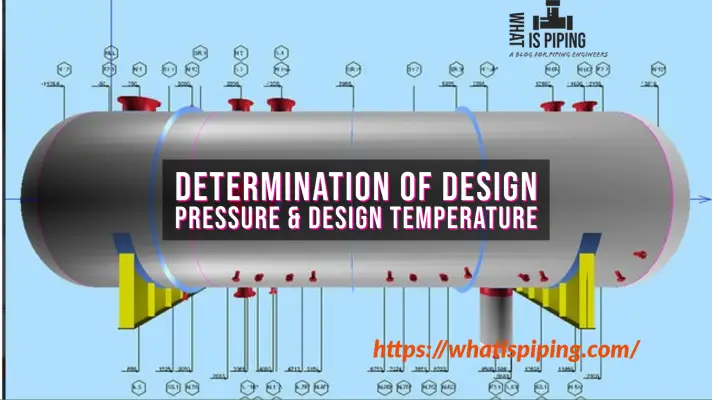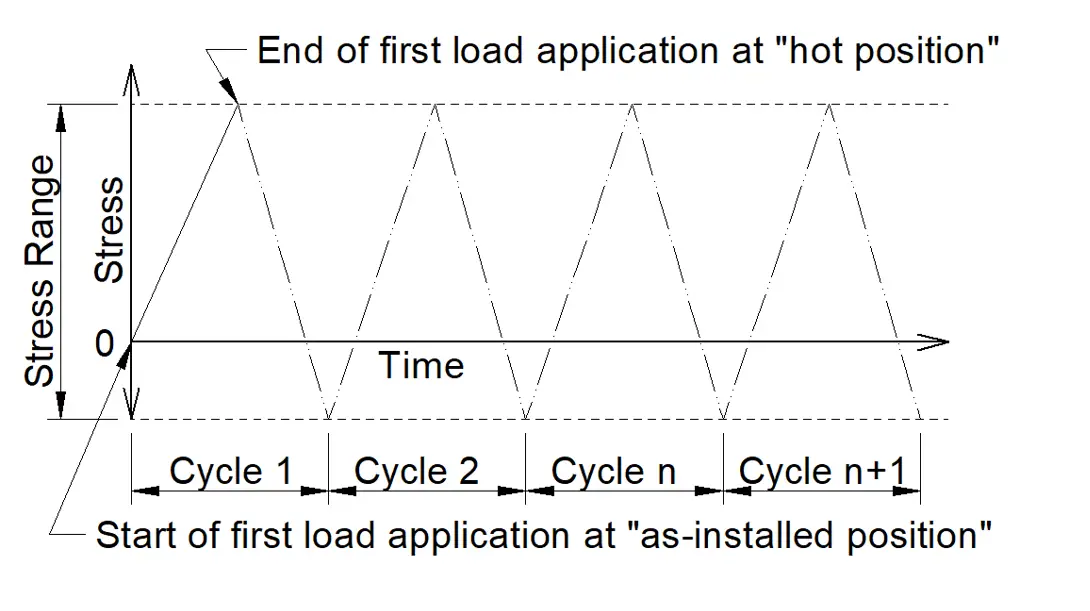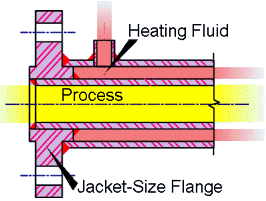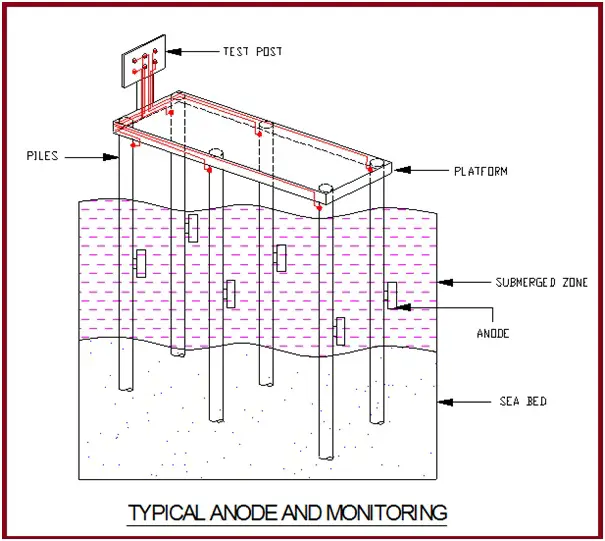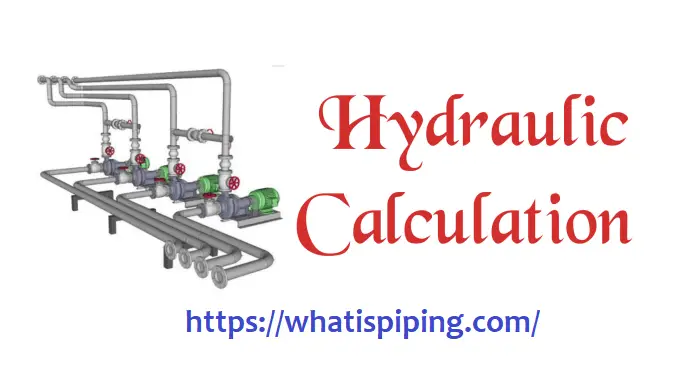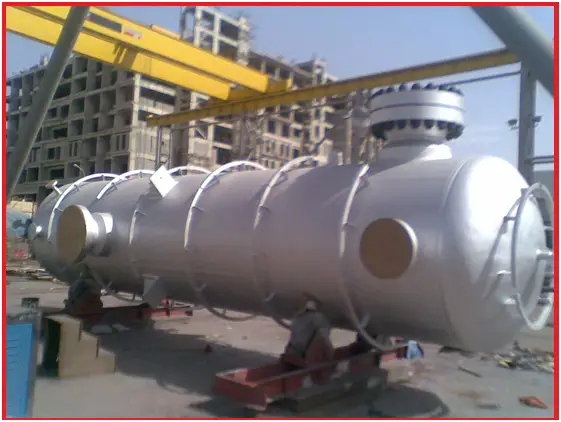The tank nozzle can be modeled using the special “Tank Nozzle” object in START-PROF software.


Tank connection modeling has a special significant features in comparison with pressure vessel modeling.
Tank Nozzle Movement due to Tank Temperature Expansion
Due to the large tank diameter, the temperature expansion can cause significant nozzle movement along its axis. This movement can be calculated by the following formula:

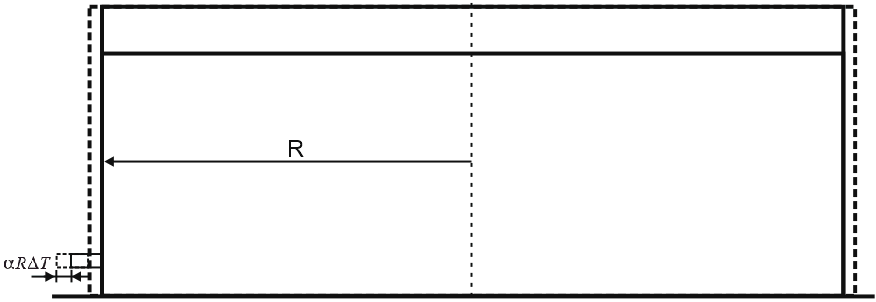
Tank nozzle displacement due to tank temperature expansion is modeled automatically using the “Tank Nozzle” object.
Tank Nozzle Movement due to Tank Settlement
Tank diameter is very large, due to this tanks usually have no foundation that can distribute its weight over the big soil area. Due to this, the tank settlement happens. Settlement value depends on soil type, tank weight, and dimensions, and should be calculated based on the geo-technological investigation report. The greatest settlement value is at the center of the tank, the lowest value is at the edges.
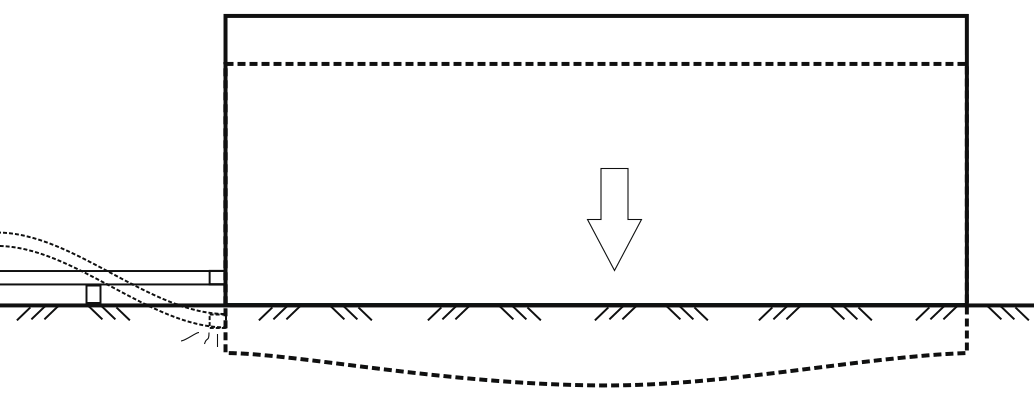
Since the piping connected to the nozzle is connected to the tank shell, we need to consider it during stress analysis. The settlement value should be specified in the “Tank Nozzle” object properties.
To reduce the effect of tank settlement on piping the first support shall be kept sufficiently away from the tank nozzle
Tank Nozzle Movement due to Tank Bulging Effect
Storage Tanks are used for liquid storage and hence, are filled with liquid. The height of the liquid level is varying therefore the pressure on the tank shell is varying. The greatest pressure is near the bottom. The tank shell tries to expand near the bottom, but the bottom holds it. Due to this the nozzle moves radially outward and rotates in a vertical plane. This effect is significant for tanks with a diameter greater than 36 m.
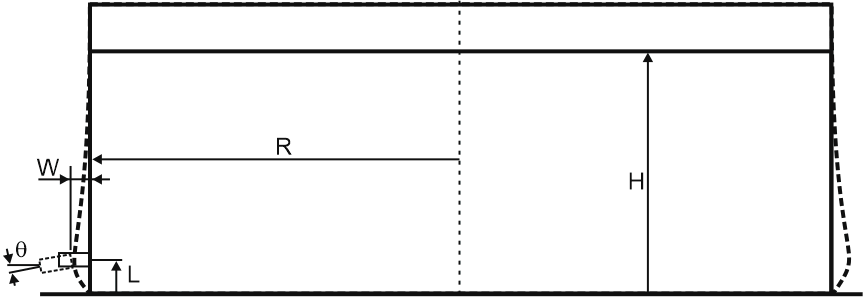
According to API 650 code Appendix P radial growth of shell due to hydrostatic pressure:
Rotation of shell due to hydrostatic pressure:
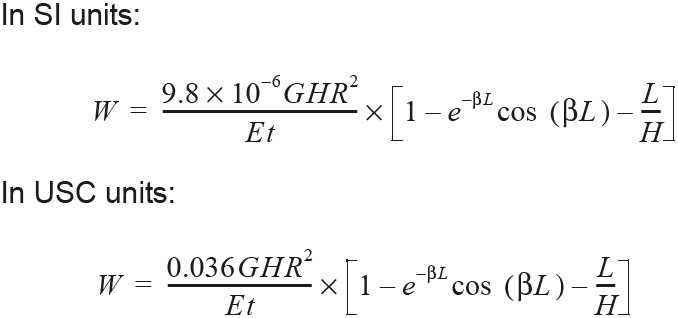
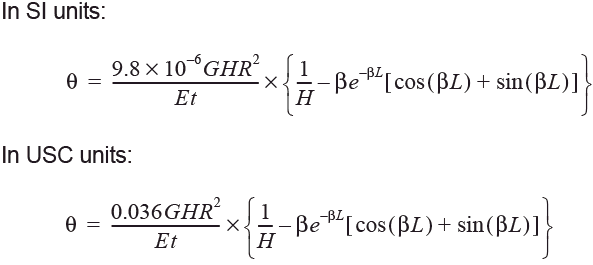
- G is the design specific-gravity of the liquid;
- H is the maximum allowable tank filling height, in mm (in.);
- L is the vertical distance from the nozzle centerline to the tank bottom, in mm (in.);
- R is the nominal tank radius, in mm (in.);
- t is the shell thickness at the opening connection, in mm (in.);
- β is the characteristic parameter, 1.285/(R*t)^0.5 (1/mm) (1/in.);
- E is the modulus of elasticity, in MPa (lbf/in.2);
- DT is the normal design temperature minus installation temperature, in °C (°F);
- a is the thermal expansion coefficient of the shell material, in mm/[mm-°C] (in./[in.-°F])
- To reduce the nozzle rotation effect, it is recommended to turn the pipe 90° very close to the tank nozzle.
To consider this effect you need to specify the filling height and product density in the “Tank Nozzle” object.
Storage Tank Nozzle Flexibility
Tank nozzle flexibility can be calculated using the API 650 code or Nozzle-FEM software.

Storage Tank Nozzle Allowable Loads
Allowable loads are calculated using two methods.
The first method is according to API 650. The allowable values envelopes for moments ML, MC, and axial force FR are shown in the pictures below
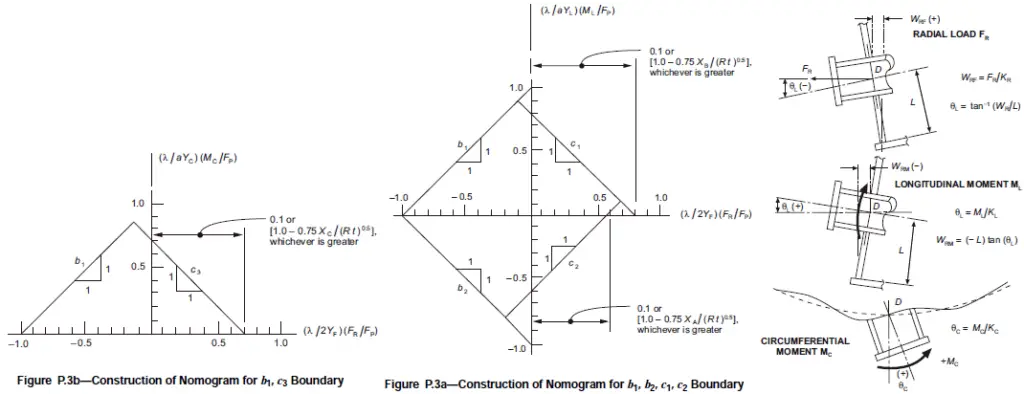
The second method is according to STO SA 93-002-2009 code (Russian Standard). The allowable values envelopes for moments ML, MC, and axial force FR are shown in the pictures below

The method can be used if D and DN values are inside the following envelope

Also, Nozzle-FEM software may be used.
Few more related articles to clear your doubts.
Stress Analysis using Start-Prof
An article on Tank Bulging effect or bulging effect of tank shells
Tank Settlement for Piping Stress Analysis
Various Types of Atmospheric Storage Tanks
A Brief Presentation on Storage Tanks
Considerations for Storage Tanks Nozzles Orientation
Equipment and Piping Layout for Storage Tanks
Case Study of Tank Farm Design and Dike Wall Height Calculation
Difference between API 650 and API 620 Tanks: API 650 vs API 620
Camouflaging of Oil Storage Tanks
Storage Tank Failure: Examples, Causes, and Prevention
Storage Tank Erection: Conventional vs Jacking Method

